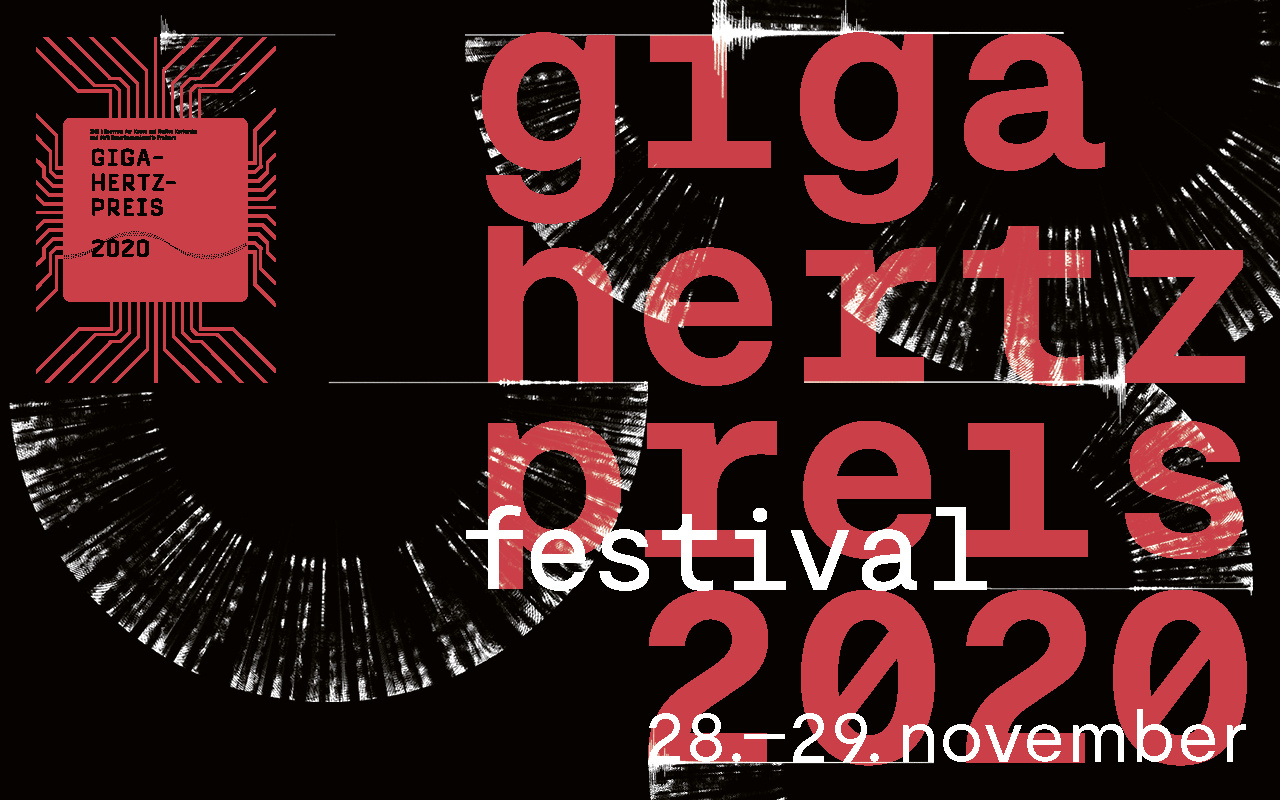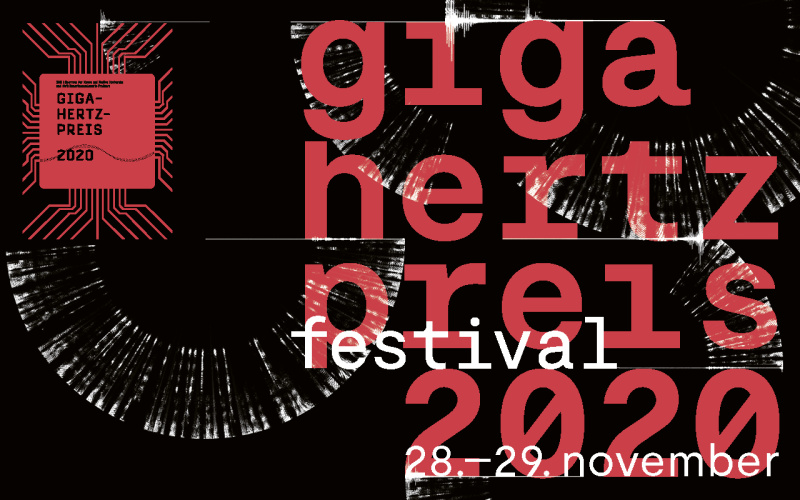- Event
- Concert
Giga-Hertz Award 2020: Concert II
Exploring the work of Alvin Lucier
Sun, November 29, 2020 4:00 pm CET
- Location
- Online
The Giga-Hertz Award Festival 2020 concludes with exploring the work of award winner Alvin Lucier. The closing concert contains two German first performances of the composer.
Alvin Lucier is a key figure for anyone who would like to fully understand the unfolding of music during the second half of the 20th century until today. Along with Robert Ashley, David Behrman and Gordon Mumma with the »Sonic Arts Union« (active from 1966 to 1976), Alvin Lucier managed to pursue and renew the path traced by the American avant-garde, in particular John Cage, by extending the compositional techniques towards devices and acoustic phenomena, thereby reshaping the process of composition itself. His impact on the musical field is also fundamental in his teaching activities, notably at Wesleyan University (1968–2011) and in some of his writings. Also inspirational is his ability to perpetuate this curiosity about the sound phenomenon and the way we can experience it as humans – that is to say to extend, musically, the disarming experience of being human, facing a phenomenal world that you can't decipher.
The exploration of Alvin Lucier's varied oeuvre will start with a film screening and a panel talk. The following concert will present four compositions from his life work, including two German premieres; additionally, you can experience another work by the sound poet in the form of a two-day online installation.
Program
| 4 pm | Filmscreening »No Ideas But in Things« by Viola Rusche and Hauke Harder about the life and work of Alvin Lucier | |
| 5.45 pm | Panel Talk Prof. Ludger Brümmer, Prof. Dr. Rudolf Frisius, Prof. Dr. habil. Sabine Sanio and Julia Gerlach |
7 pm – Concert
-
Alvin Lucier »Wave Songs« (1998)
for female voice with pure wave oscillators
German premiere. Voice: Núria Cunillera Salas; sound engineer: Sebastian Schottke
Alvin Lucier's »Wave Songs« are eleven solos for female voice and two pure wave oscillators written at the request of Andrea Miller-Killer, Shelly Casto, and James Rondeau on the occasion of Lee Lozano's »MATRIX 135« exhibition at the Wadsworth Atheneum in Hartford, Connecticut. The score was written for composer and singer Joan La Barbara, who premiered the work onsite on March 29, 1998. Lucier has written that he »imagined the work as a mini opera with Joan taking the role of Lee Lozano, singing her paintings into existence or perhaps simply singing to herself as she worked on them.«
Lucier's »Wave Songs« recall certain objective features of Lozano's »Wave Series« cycle. Lozano's painting is comprised of eleven canvases each 96 inches high; Lucier's score is comprised of eleven solos each 96 seconds long; and both artists draw on the various factors of 96 – 2, 4, 6, 8, 12, 16, 24, 32, 48, and 96 – to structure their statements.
For example, in the first solo we hear two pure waves tuned 48 hertz apart; the vocalist, beginning and ending in unison, sings a descending line that divides this space into eight-hertz intervals. In subsequent solos, the two pure waves draw closer together, ultimately reaching a near unison, and the vocalist sings against one or both waves creating audible beats that differently explore the numerological possibilities. Throughout, the vocalist matches the sound of the pure waves by singing on the vowel sound »oo«, excepting for solo »X«, which draws on a text of Lozano.
Author: Keith Moore
-
Alvin Lucier »Music for Cello With One or More Amplified Vases« (1993)
for cello and amplified vases
cello: Nathan Watts; sound engineer: Sebastian Schottke
Abstract of the score:
»One or more large vases are placed around the cellist. Microphones are inserted into the mouths of the vases, routed through amplifiers to loudspeakers. During the course of the performance, the player slowly and continuously sweeps up the range of the cello, searching for resonances in the vases that are picked up by the microphones and made audible for listeners.
Cellist:
Starting on Low C, sweep up a 5th, taking 2 or more minutes to do so. As the 5th is reached, move the bow as smoothly as possible to the G-string and continue seeping upward. Proceed similarly with the D- and A-strings. From time to time stop and explore certain resonances by slightly varying the pitch and amplitude of your bowing. Overlappings between the ascending sweep and the fixed tone of the open string will produce audible beating that slows down to zero when perfect unison is reached.»Music for Cello With One or More Amplified Vases« was first performed by Erika Duke-Kirkpatrick, on February 13, 1992 at Wires Center in Venice, California. It has been recorded by Charles Curtis on Antiopic (Sigma Editions) and performed by Mr. Curtis numerous times in the United States and Europe.«
– Alvin Lucier
-
Alvin Lucier »Music for Piano with One or More Snare Drums« (1990)
for piano and snare drums
German premiere. Piano: Tayuko Nakao-Seibert; sound engineer: Sebastian Schottke
»'Music for Piano With One Or More Snare Drum' is one of a series of works I have written for piano with resonant objects. In »Music For Piano With Amplified Sonorous Vessels« microphones, inserted in small containers placed inside the piano pick up resonances specific to the physical dimensions of the containers, and in »Nothing Is Real«, fragments of a Beatles song are heard flowing from a teapot. In this work, tones from a piano sympathetically resonate snare drums, positioned throughout the space.
The pianist plays a series of notated pitches in chronological order, repeating them in various overlapping patterns. As she does so, the drums respond depending on the pitch of the piano tones, the resonate regions of the drums and their geographical locations in space.
»Music For Piano With One Or More Snare Drums« was written for Hildegard Kleeb and first first performed by her on March 21, 1992, at the Galerie Sou-Sol, Geneva, Switzerland.«
– Alvin Lucier
-
Alvin Lucier »Music for Pure Waves, Bass Drums, and Acoustic Pendulums« (1980)
»Music for Pure Waves, Bass Drums and Acoustic Pendulums« (1980) sits at a double crossroads in Lucier's output. It can be realized as an installation or performance work; and it is both the classic conclusion to a period of compositional activity focussed on conceptual and live electronic music, and the beginning of a second phase of writing that explores the potential of these concerns in the presence of traditional acoustic instruments.
Lucier describes the composition in this way: »Electronically-generated sound waves excite the heads of four large bass drums, setting into motion ultra-light pendulums which are suspended in front of the drums. The rhythms created as the tips of the pendulums strike the heads of the drums are determined by the pitch and loudness of the waves, the lengths of the pendulums, and the resonant characteristics of the drums themselves.«
In a performance the musician manually rotates »the frequency tuning dial of the oscillator in one upward sweep […] with microscopic slowness, so as not to miss any possible pattern, and with continuous motion, so as to make an accurate mapping in time of all resonant, sympathetic, pendular, sonic, and visible phenomenon.« For the installation, »a resonant frequency common to all the drums« is found so that »changes in temperature, humidity, and other environmental conditions alter the tensions of the drumheads, thereby varying the pendular motion and its resulting sonic and rhythmic manifestations.«
Author: Keith Moore
-
Alvin Lucier »I Am Sitting in a Room« (1969)
for voice and electromagnetic tape. Playback of a 5-channel live recording made at ZKM | Karlsruhe on January 8, 2020. Concept by Johannes Goebel.
2000 | Concept: Johannes Goebel, Mathias Osterwold; Audio networks: Alexander Noelle, Bernhard Sturm; Sound projection: Christian Venghaus, Thomas Sauer.
2020 | Sound engineer: Sebastian Schottke»During the spring of 1969 I was living in an apartment on 454 High Street, Middletown. It was a sordid habitat, the kind universities rent to part-time faculty. It had a green shag rug, heavy drapes on the windows and an old armchair. I mention this because it has a lot to do with the acoustics of the room. The kitchen was supplied with one pot and a skillet and a coffee cup. But that was OK; I was by myself and I ate out a lot anyway.
One night I borrowed two Nagra tape recorders from the Music Department. They had purchased them for ethnological field recording. At that time Nagra machines were the sine qua non of the recording industry. They were the finest portable reel-to-reel recorders for films and field recording. Any Hollywood Western you ever saw was probably recorded with a Nagra. They were beautiful machines. I had a Beyer microphone, a single KLH loudspeaker and a Dynaco amplifier. I set the mike up in the living room, sat down in the armchair and wrote out a text that explained what I was about to do. In those days, there was a genre of work in which the process of the composition was the content of the work. I remember a Judson Church dancer describing her motions as she was doing them. I decided that the work would have no poetic or aesthetic content. The art was someplace else.
I placed the two machines on a table outside the door so the spinning reels wouldn't make noise. I unplugged the refrigerator, turned off the heat. I waited until the radiator pipes had cooled and the room got quiet. I waited until after 11 o'clock when a local bar, »The Three Coins«, closed. It was snowing that night so it was relatively quiet outside. There was not a lot of traffic going by. I went outside into the hallway, turned on one of the Nagras and, returning to the living room, read the text into the microphone. When I was finished, I went back out into the hallway, stopped the machine, rewound the tape and listened to the results through headphones. The levels on the meters were OK. They hadn’t peaked into the red zone that would have indicated distortion. I transferred the tape to the second recorder, which was routed through the amplifier to the loudspeaker, which I had positioned on the chair I had been sitting in. I wanted the copy to sound as much like my original speech as possible. I wanted it to sound as if I were there in person actually talking in the room.
I went back outside the room and played this copy into the room again, recording it on the first recorder. I repeated this procedure until I had sixteen versions, one original and fifteen copies. I stayed up all night doing it. As the process continued more and more of the resonances of the room came forth; the intelligibility of the speech disappeared. Speech became music. It was magical.
I chose speech to test the space because it is rich in sounds. It has fundamental tones (formants) and lots of noisy stuff—p's, t's, s's, k's. It was crucial to avoid poetic references—poems, prayers, anything with high aesthetic value. I felt that would only get in the way. I wanted the acoustic exploration to be paramount, the room acoustics and it's gradual transformation to be the point of the piece.«
– Alvin Lucier

